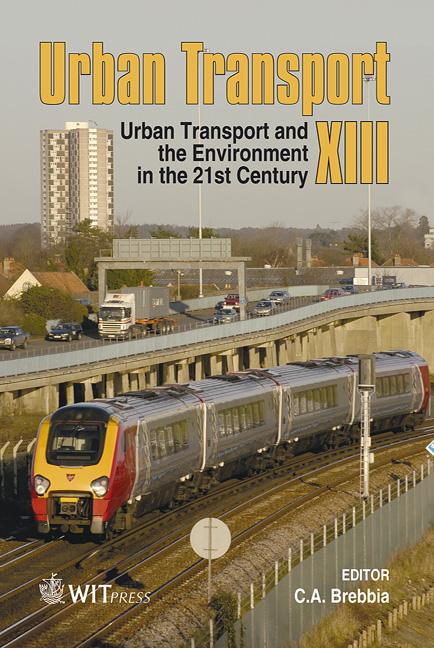A Method Of Building An Aggregated Indicator Of Air-pollution Impacts
Price
Free (open access)
Transaction
Volume
96
Pages
9
Published
2007
Size
475 kb
Paper DOI
10.2495/UT070711
Copyright
WIT Press
Author(s)
T. Goger & R. Joumard
Abstract
We intend to build a global environmental impact indicator of air pollution to assess transport infrastructures and technologies. This indicator should be simple and transparent to facilitate its use in decision-making. The intention is for the indicator to resemble the Global Warming Potential (GWP), which establishes a relationship between the emission of six greenhouse gases and the average temperature increase of the Earth. The indicator will therefore permit estimation of the global environmental impact of transport-generated air pollution, while simultaneously conserving the value of the environmental impact of each type of air pollution and the emission assessment. This work is based on an impact typology, a set of indicators, and an aggregation architecture of atmospheric pollution. The typology is established as a combination of the specific and homogenous characteristics of each type of pollution in terms of pollutant, impact mechanism, target and environmental impact. To ensure exhaustiveness and non-redundancy, 10 types of air pollution impact are proposed: greenhouse effect, ozone depletion, direct ecotoxicity (this type of pollution excludes greenhouse effects on nature, ozone depletion, eutrophication, acidification and photochemical pollution), eutrophication, acidification, photochemical pollution, restricted direct health effects (not taking into account welfare, and excluding the effects on health of the greenhouse effect, ozone depletion, acidification and photochemical pollution), sensitive pollution (annoyance caused by odours and fumes), and degradation of common and historical man-made heritage. Indicators similar to GWP can be identified in the literature for each type of atmospheric pollution, except for the degradation of common and historical man-made heritage, for which the financial cost of conservation could be used. However, these indicators do not seem to have achieved wide scientific consensus, except for GWP, which may make it necessary to continue research in this field. Aggregating the different indicators is proposed by using an architecture composed of two structures that aggregate types of air pollution. One is based on the target affected, whereas the second has three dimensions, i.e. targets, space and time. This architecture allows the indicator’s users to establish a hierarchy of concerns for each type of atmospheric pollution. Keywords: air pollution, environmental impact, emissions, target, typology, aggregation, indicator.
Keywords
air pollution, environmental impact, emissions, target, typology, aggregation, indicator.





